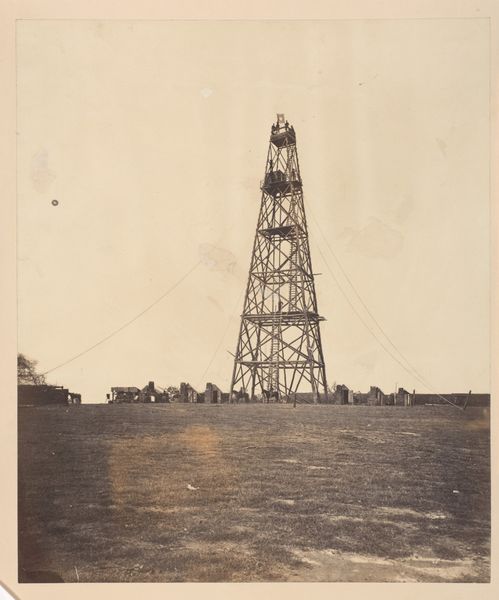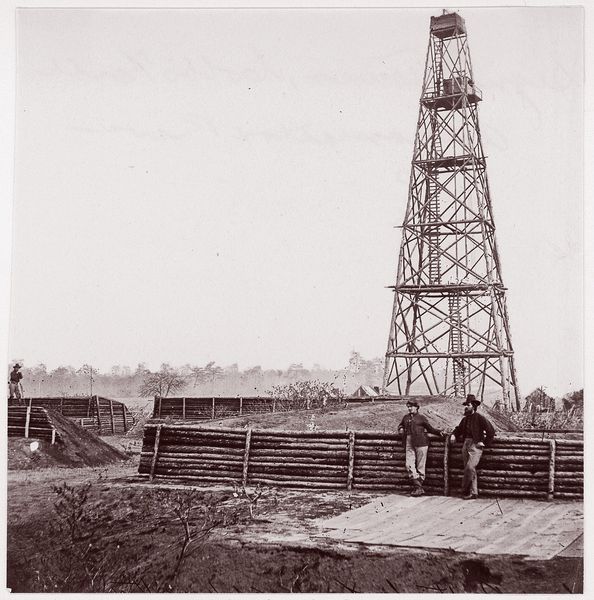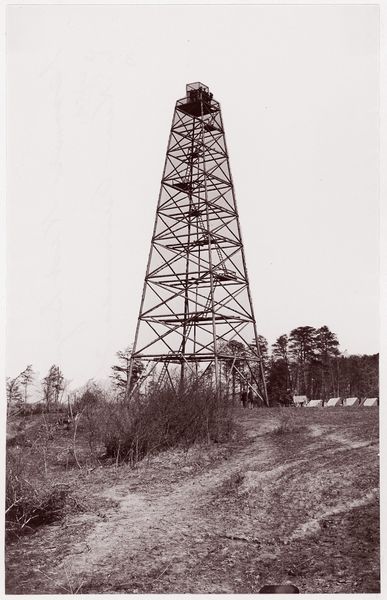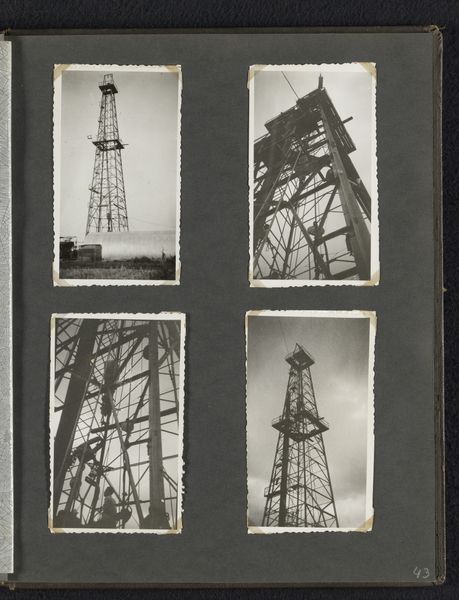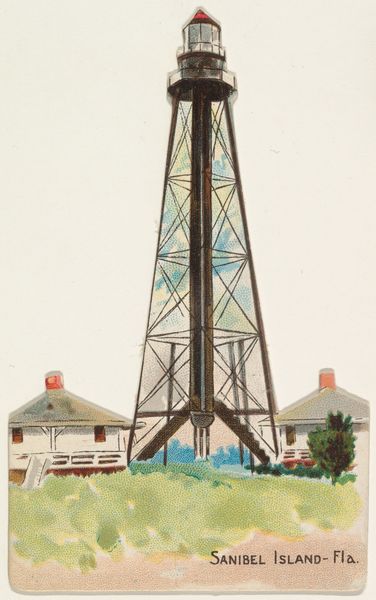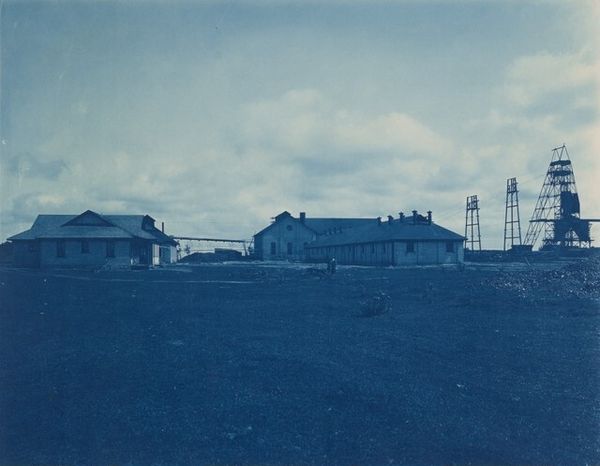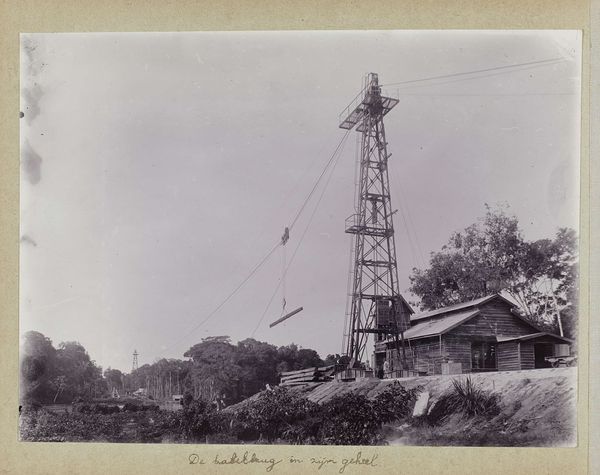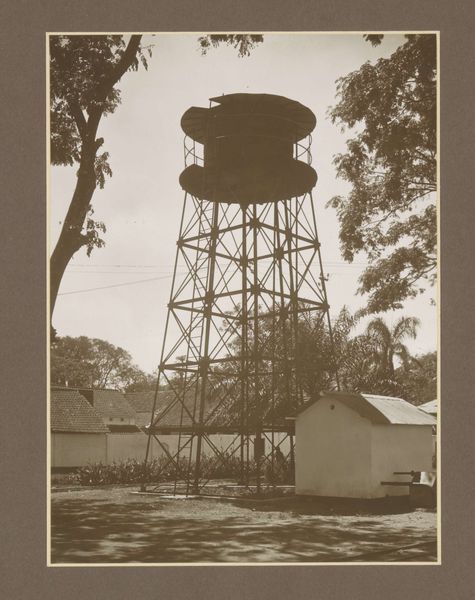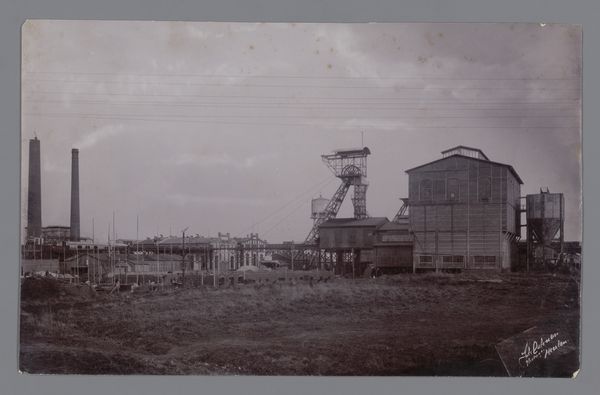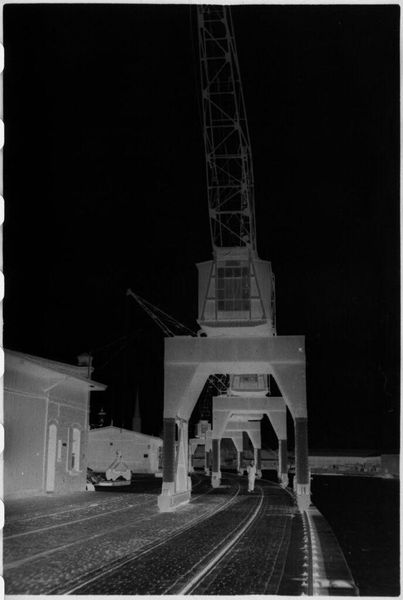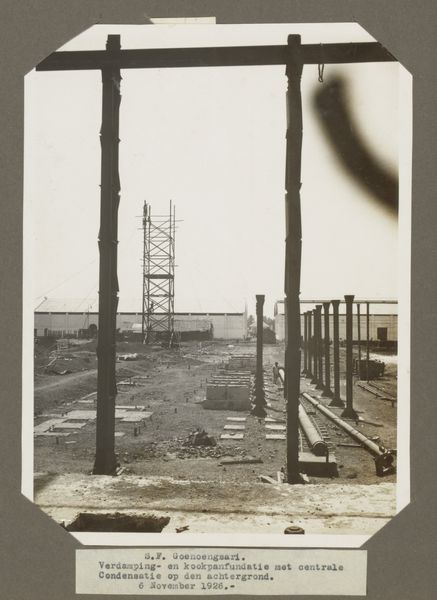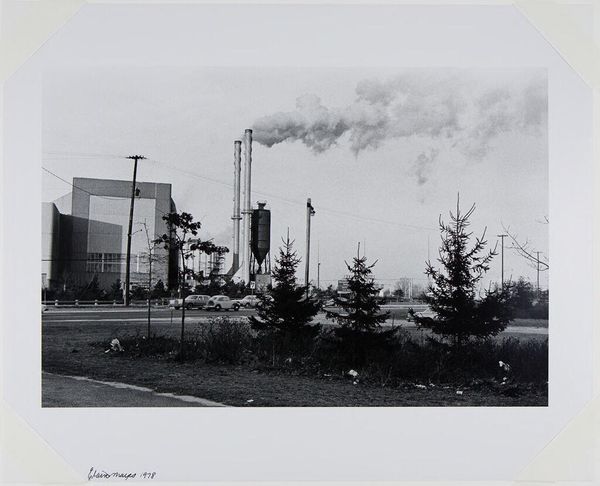
Butler's Lookout Tower, Opposite Dutch Gap 1865
0:00
0:00
photography, gelatin-silver-print
#
war
#
landscape
#
outdoor photography
#
photography
#
gelatin-silver-print
#
monochrome photography
#
history-painting
#
public art photography
#
realism
#
monochrome
Copyright: Public Domain
Editor: So, this is Andrew Joseph Russell's "Butler's Lookout Tower, Opposite Dutch Gap," a gelatin-silver print from 1865. It's strikingly sparse – just the tower, a wagon, and a tree against this bright, almost empty sky. It feels…stark. What do you see in this piece? Curator: I see a powerful visual document deeply entrenched in the socio-political landscape of the American Civil War. Look at the starkness, as you mentioned. The watchtower looms, a symbol of surveillance and control, standing in opposition to the seemingly benign tree. What does it mean to construct a tower that aims to assert domination over a landscape? Who is granted that power, and to what end is it employed? Editor: Control, definitely. And maybe a sense of vulnerability too, given the war context. It looks quite fragile. Curator: Exactly. It's vital to remember this image isn’t just a landscape. It's a site of conflict, visually echoing the broader struggle for power and the racial injustice at the heart of the Civil War. These towers overlooked locations where enslaved people were forced to build canals and infrastructure for the Confederacy. Can we separate the stark beauty of the image from the suffering that occurred on this site? I don’t think so. Editor: So, you're saying it challenges us to confront the uncomfortable realities behind even seemingly neutral depictions? Curator: Precisely. And it also begs us to examine how photography itself can be complicit in documenting – and therefore, potentially, legitimizing – these power dynamics. This image forces us to look critically at who gets to represent history and whose stories are amplified. Editor: It's unsettling how much history is packed into one image. I hadn't considered the photographer's role in shaping the narrative. Curator: It is. And understanding that dynamic is key to interpreting historical photographs like this one, and for seeing our present critically.
Comments
No comments
Be the first to comment and join the conversation on the ultimate creative platform.
